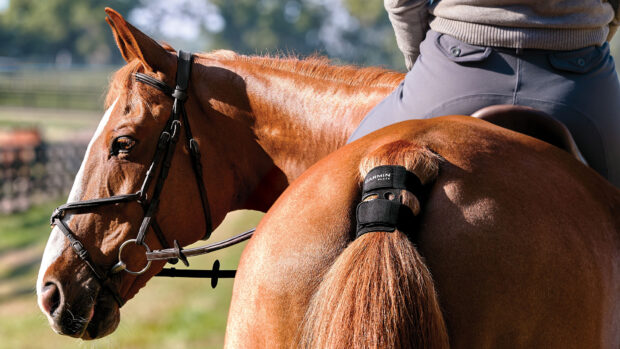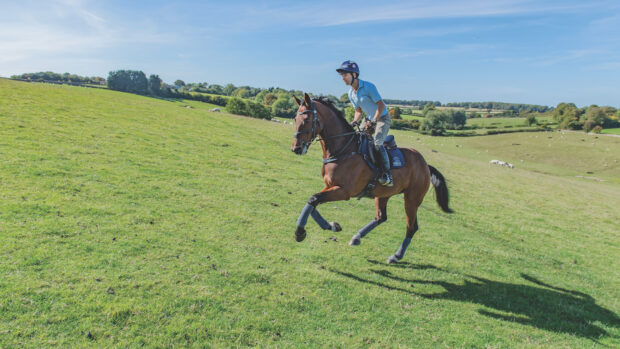Widely used among today’s equine and human athletes alike, the first form of interval training is said to have been developed by the Hittites – great horsemen who lived around 1600 to 717BC.
They used such methods to train their chariot horses so they could travel for long distances at high speed. Today, interval training is used in many spheres of equestrianism, most commonly in eventing and endurance, where great stamina is required.
What is interval training?
Interval training is designed to strengthen the horse’s muscles and respiratory system by a gradual increase in ‘stress’ or exercise levels. In this way, over time, the horse reaches a level of fitness that will enable him to make the sustained effort required in competition.
How does it work?
At the onset of training, the horse is only able to maintain intense levels of activity for a short period, and so needs a period of recovery. If he is forced to continue at the intense level, his heart rate will rise, anaerobic respiration will come into play (see right), and he will become fatigued.
Interval training consists of repeated spells of exercise interspersed with periods of rest, in which the horse is allowed to slow down and almost recover his pre-work pulse rate, before going on to the next interval of faster work (hence the name).
Not allowing the horse’s pulse rate to drop completely to its normal level during the rest periods strengthens the muscles, heart and lungs, and helps them to adapt to the stress placed on them, making them better able to cope with exercise next time it occurs.
Interval training also develops the capacity of the horse’s respiratory and circulatory systems. As the heart becomes stronger, it is able to pump more blood around the body, providing the muscles with oxygen more efficiently, thus delaying the onset of the anaerobic phase.
The difference between aerobic and anaerobic respiration
At heart rates of 140 beats per minute [bpm] or below, the horse’s respiratory system is said to be functioning aerobically, with the blood supplying oxygen to the cells, including the muscle cells. The horse can continue working at this pace for long periods without fatigue.
However, when the heart rate reaches 150-160bpm and above (during a very fast canter), lactic acid is released into the muscles and the horse tires. Any further increase in speed or effort results in the production of more lactic acid; this is described as the anaerobic phase.
Anaerobic exercise cannot be sustained for long periods but as the horse becomes fitter, his aerobic capacity will increase, the anaerobic phase will be delayed, and his recovery rates, overall fitness and stamina will improve.
Choosing a fitness level
Before introducing interval training to your fitness regime, it is important to choose the level of fitness your horse requires. This will vary according to the level and type of competition you are planning to enter (endurance or cross-country, for example).
Ask your instructor or an experienced person to help you work out the best structure for your training. Your regime will depend on your horse’s individual needs and the facilities you have at your disposal.
Canter work and interval training should be introduced in the final two weeks of an eight- to nine-week fitness programme.
As a general rule for a horse being prepared for a novice one-day event, two five-minute canters, interspersed with a three-minute walk (per session) should be sufficient. These sessions should be carried out once a week, as part of a full fitness programme consisting of hacking, schooling and jumping training.
As your horse becomes fitter, you will be able to increase the periods of canter – again, this will vary with each horse and it is important to seek advice from your trainer. In time, you will find that your horse is able to travel faster for longer.
Tracking your horse’s fitness
Reading your horse’s pulse and noting his length of recovery will help you judge his fitness level. As he becomes fitter, his heart rate will go down, since the heart’s capacity will have increased and it will be able to pump more blood with each beat.
You can feel for your horse’s pulse under his jaw, or use a stethoscope to listen to his heart. Many riders and trainers use a heart rate monitor, which can be attached to the horse’s skin or numnah. Monitors cost from around £50.
This feature was first published in the September 2004 issue of HORSE magazine



